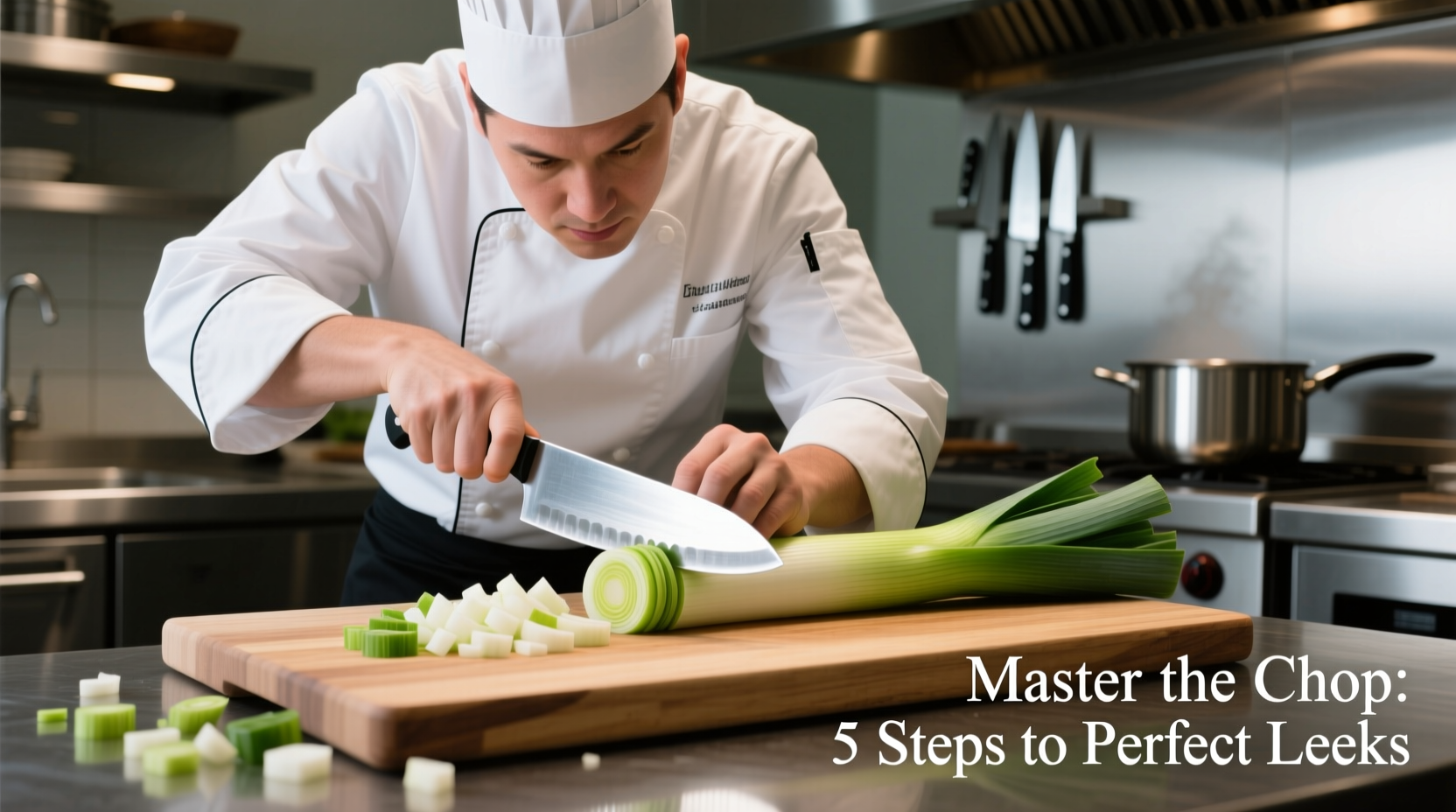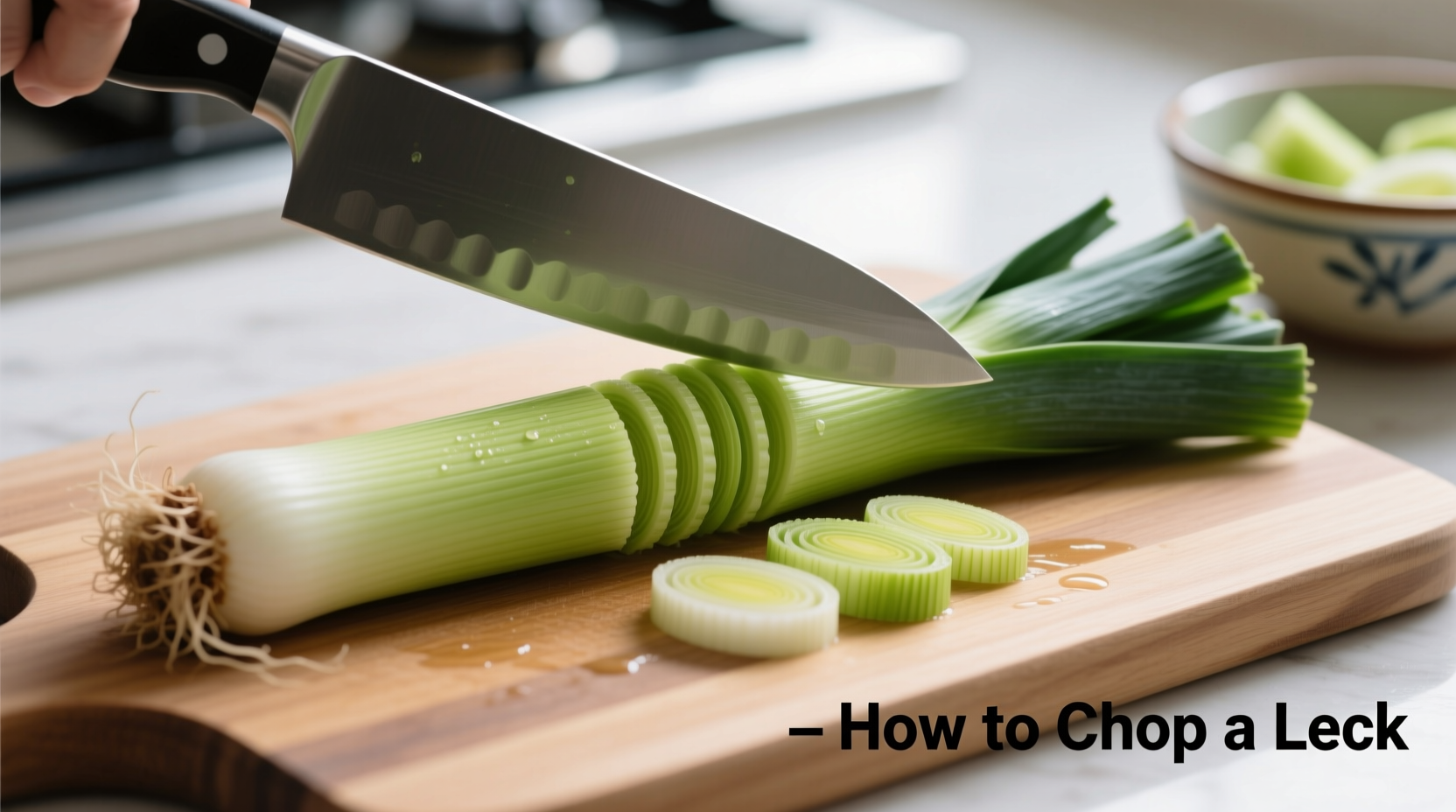Cutting a leek properly requires trimming the root end and dark green tops, thoroughly washing to remove hidden dirt between layers, then slicing crosswise into uniform pieces. The key is meticulous cleaning—soak sliced leeks in cold water and agitate to release trapped soil before draining and patting dry.
Mastering Leek Preparation: From Garden to Cutting Board
Learning how to chop a leek correctly transforms this versatile allium from a gritty nuisance into a kitchen staple. Many home cooks waste perfectly good leek portions or end up with sandy salads because they skip critical cleaning steps. This guide reveals professional techniques that ensure clean, perfectly cut leeks every time—whether you're making potato leek soup, quiches, or stir-fries.
Why Proper Leek Chopping Matters
Leeks grow vertically in sandy soil, trapping dirt between their concentric layers. Unlike onions, their structure creates hidden pockets where soil accumulates. According to USDA food safety guidelines, improperly cleaned vegetables contribute to 12% of foodborne illness cases linked to fresh produce. Taking time to learn how to properly cut leeks prevents gritty textures and potential health risks while maximizing usable portions.
Essential Tools for Perfect Leek Chopping
Before starting your leek chopping process, gather these kitchen essentials:
- Sharp chef's knife (8-10 inches)
- Sturdy cutting board
- Large bowl for washing
- Colander or fine-mesh strainer
- Clean kitchen towel or paper towels
Step-by-Step Guide to Chopping Leeks
1. Trimming Your Leeks
Begin by removing the root end—leave about 1/4 inch to keep layers intact during cleaning. Cut off the tough dark green tops where the color transitions to medium green; save these for homemade stock. The edible portion ranges from white base through light green sections.
2. The Critical Washing Process
This how to chop a leek technique makes all the difference:
- Slice leeks crosswise into your desired thickness
- Place slices in a large bowl of cold water
- Agitate vigorously with your hands for 30 seconds
- Allow dirt to settle while clean leeks float
- Transfer clean leeks to colander using slotted spoon
- Rinse under cold water and pat completely dry
| Leek Size | Recommended Cut | Best Recipe Applications |
|---|---|---|
| Small (thin) | Thin slices (1/8 inch) | Omelets, delicate sauces |
| Medium | Medium slices (1/4 inch) | Soups, quiches, casseroles |
| Large (thick) | Thick slices (1/2 inch) | Grilling, roasting, stir-fries |
3. Slicing Techniques for Different Recipes
Your recipe determines the ideal how to cut leeks method:
- Julienne: For stir-fries and garnishes, cut lengthwise into thin matchsticks
- Half-moons: Most common cut—slice crosswise for even cooking in soups
- Dice: For uniform texture in stuffings and fillings
4. Storing Chopped Leeks
Properly stored chopped leeks maintain freshness for 3-4 days. Place in airtight container lined with paper towels to absorb excess moisture. For longer storage, blanch sliced leeks for 90 seconds, cool in ice water, then freeze in portion-sized bags. This how to prepare leeks technique preserves flavor for up to 6 months.

Common Leek Chopping Mistakes to Avoid
Avoid these frequent errors when learning how to chop leeks properly:
- Skipping the wash: Never skip the water bath—dirt hides between layers
- Using a dull knife: Causes bruising and uneven cuts that affect cooking
- Cutting too thick: Thick slices won't cook evenly in most recipes
- Discarding usable portions: Medium green sections add flavor to stocks
Professional Tips for Perfect Leek Results
As a chef with years of experience teaching knife skills, I've found these techniques make the difference between amateur and professional results:
- Chill leeks for 30 minutes before cutting for cleaner slices
- Use the "claw grip" with non-knife hand to protect fingers
- Cut against the grain for tender results in cooked dishes
- Save trimmings for vegetable stock—nothing goes to waste
When Different Cuts Matter Most
Understanding recipe requirements determines your how to slice leeks approach. For potato leek soup, thin half-moons ensure complete integration with potatoes. In quiches, slightly thicker slices maintain texture. Stir-fries benefit from diagonal cuts that increase surface area for caramelization. The context boundaries for leek preparation depend entirely on your final dish—there's no universal "best" cut.
Food Safety Considerations
The FDA recommends washing all produce under running water before preparation. For leeks specifically, the water bath method proves most effective for removing trapped soil. Never use soap or detergent on vegetables. Always wash hands and sanitize surfaces after handling raw produce to prevent cross-contamination.











 浙公网安备
33010002000092号
浙公网安备
33010002000092号 浙B2-20120091-4
浙B2-20120091-4